TKO By Checkmate: Inside the World of Chessboxing
Demanding a combination of brains and brawn, this new sport has competitors floating like butterflies and stinging like kings
/https://tf-cmsv2-smithsonianmag-media.s3.amazonaws.com/filer/chess-boxing-631.jpg)
There’s a boxing ring planted in the middle of a London nightclub.
So far, nothing too out of the ordinary. But there’s also a folding table in the center of the ring, and on it, a chessboard. And rather than gloving up to start sparring, the two boxers, hands wrapped, sit down to square off over the board. Because this isn’t regular boxing—it’s chessboxing.
Chessboxing is a hybrid sport that is exactly what it sounds like: Chess plus boxing, or, more specifically, a round of chess followed by a round of boxing, repeated until someone comes out the victor. As Tim Woolgar, founder of London Chessboxing, says, “If you know how to play chess and you know how to box, you know how to chessbox.”
Easy enough. But why? “They’re two sports where you have a duel and all you’ve got to help you is what you’ve brought to the table at that time. It’s your talent, your preparation,” explains Woolgar. “And what it comes down to, in the end, is a battle of wills.” A battle of wills, he says, both intellectual and physical.
Chess is a game with a long and hallowed history, and in the roughly 1,500 years since it first popped up in northwest India and Central Asia, it has earned a reputation as the most intellectual of pursuits. Boxing has been around for longer—pitting two men against one another in a contest of physical combat has been Saturday night entertainment since time immemorial. But combining chess and boxing didn’t occur until 1992, and even then, it was only in the art of a Bosnian-born French filmmaker and comic book artist named Enki Bilal, whose science fiction graphic novel Froid Équateur featured a dystopia where a former soldier becomes a chessboxer. (Bilal may have – may have – been inspired by the 1979 kung fu film, Mystery of Chessboxing, also released as Ninja Checkmate, in which a young boy wants to avenge his father’s death by learning kung fu and takes lessons from a master of xiangqi, or Chinese chess.)
Eleven years later, on November 14, 2003, Dutch performance artist Iepe “The Joker” Rubingh organized the first live chessboxing match at a club in Amsterdam between himself and “Luis the Lawyer”; the event sold out. Rubingh must have known it was going to be popular—just before the fight, he founded the World Chess Boxing Organization, which calls itself the governing body of the sport and has members organizations around the world.
Since then, chessboxing has grown to a global phenomenon. There are around 380 active members of the World Chess Boxing Organization, with affiliate groups across Europe, Asia and America. The Berlin Chessboxing Club alone has 450 members, 80 of whom are in training almost every day. In January, the first Indian national chessboxing championships took place in Kolkata, featuring more than 180 fighters from 10 states. There’s a chessboxing club in Los Angeles that holds chessboxing matches for charity, and another in China, asking “Who’s the smartest, toughest guy in China?” In the last three months, a chessboxing club even formed in Iran.
Chessboxing came to London five years ago, after Woolgar happened to hear about the sport at a party. Immediately intrigued, he did some research and liked what he saw: a challenge. “You want to know what it will feel like to do it to have to get in the ring and fight and maintain your cool and maintain your ability to think strategically in an extreme environment,” Woolgar explains. “It’s a big test of your mental stamina, physical stamina, but also your emotional stamina as well.”
Finding no club in London, he decided to start his own with a creative name, London Chessboxing. That was back in April 2008; at the time, Woolgar was working with an independent television production shop. Chessboxing, however, proved so instantly popular that Woolgar quit his job to concentrate on developing the sport full time. Last year, London Chessboxing held five events, including one in the basement of Royal Albert Hall to a sell-out crowd of 500.
So this particular Saturday night, March 23, was London Chessboxing’s Grand Prix season opener—“Brain vs. Pain,” as it was dubbed. The event, held at the Scala, a nightclub near London’s Kings Cross station, sold out; the 800 people packed into the club were mostly men, mostly in their 20s or 30s, and mostly drinking. Woolgar, when asked whether it was chess fans, boxing fans or both who come to the matches, answered, “It’s neither. It’s fans of entertainment.”
And it was entertaining. Chessboxing at the Scala was a strange mix of spectacle and sport; the evening started with Bambi, a young woman clad in a silver spangly bustier and torn fishnet stockings who pranced around the ring to Rihanna’s “Only Girl In The World,” put a lit cigarette out on her tongue, and hammered a nail up her nose. But the crowd response to Bambi was tepid. They were here for the chessboxing, although they weren’t entirely sure what that meant—for many, this was their first time.
A match goes like this: Competitors are matched by weight class and chess ability. The first round is chess, played at a folding table placed in the center of the ring. The competitors wear headphones, blasting music at a high decibel, so they can’t hear the chess commentator explaining the play, or hear anyone in the crowd shouting out moves. The board is electronic, allowing moves to be tracked on a projection of the board visible to the audience. The chess play lasts four minutes, but—and this is a bit confusing—each competitor has 12 total minutes of chess playing time, counted down on a clock when they make a move. This means that it’s very possible for a competitor to lose the entire bout because he or she ran out of time on their clock (it happened twice out of four bouts at Brain vs. Pain).
After four minutes of chess play, the bell rings, the board is stowed, headphones are removed and the competitors get to pummeling each other with a real and surprising ferocity. Then, the chess pieces are returned to the table and the game resumes. This is repeated for 11 rounds or until someone checkmates, runs out of time on the chess clock, gets knocked out, or throws in the towel. (Notably, no one who fought that night at the Scala was paid to fight, although Woolgar says that larger bouts will sometimes have prizes.)
The whole thing is somewhat surreal: There’s Ray Keene, the first British chess grandmaster, a bow-tie wearing, bespectacled gentleman who would look more at home at an Oxford lecture hall than a London nightclub, explaining chess moves to the crowd. Keene served as commentator for the first bout, a pretty uneven exhibition match between Woolgar and Andy “The Rock” Costello, a very fit veteran heavyweight. Matt “Crazy Arms” Read entered the ring to “One Night in Bangkok”, from the musical Chess. And then there are the spectators shouting “Bash his bishop!” or “Punish his pawn!” during the chess, and “Fight, fight, fight!” or “Kill him, Crazy Arms!” during the boxing.
One week before “Brain vs. Pain,” “Crazy Arms” Read, Woolgar and several other chessboxers were in training at the Islington Boxing Club in North London. This is the kind of well-worn place where serious boxers train, a place where pictures of former and current students of all ages, local champs and boxing greats, are plastered on the walls, looking fierce and grave. There are two training rings, swinging punching bags, speed bags, and mirrors all around so you can check your technique. It smells like old sweat and dirty hand wraps: it smells like a boxing gym.
So the only thing that seemed out of place was the bright yellow and black magnetic instruction chessboard, leaning against a wall covered with pictures of junior boxers, and the four chessboards displayed on two folding tables. Training alternates between boxing and chess. Anthony Wright, a former professional boxer, shouts instruction, criticism and encouragement at the sweaty trainees as they bob, weave and punch their way around the room. “I want punch punch punch, and I want movement!”
When the bell rings, it’s back to the chessboard. Just as at the match, training alternates between boxing— shadow boxing, sprints, working out with the bag— and chess.
This week, there were seven trainees, including a 12-year-old girl, the daughter of one of the chessboxers. They paired off over the chessboards, their wrapped hands moving the pieces around the board as Read murmured instruction: “Knights move in an L-shape, it’s like a hook— you don’t see them coming.”
The challenge for the chessboxer isn’t just in mastering either chess or boxing, but being able to effectively transition between the two, going from a heart-pounding adrenaline rush to calm, collected strategy in less than the minute it takes to set the board in the ring. “Adrenaline is a very useful thing in boxing, but it’s not particularly useful in chess,” explains Read.
The boxing is very real, which makes the chess that much harder. “Everything rattles about, your focus goes, your concentration goes. You have to physically regroup, mentally regroup, get a bit of traction back in the legs so you can at least stand up and stand straight, look straight, try and convince your opponent that you’re not about to fall over. Because it’s psychological warfare, just as much in the boxing as it is in chess, you can’t let your opponent know that you’re tired,” says Read. “When it comes to the chess, you’ve got to clear your head of everything that’s gone on in the boxing. The fact that in three minutes time or four minutes time he can be hurting you again, if you start thinking about that, then you’re not going to be thinking about your chess.”
After the morning’s session, Read and a few of the other chessboxers head over to a nearby pub for drinks (just orange juice, as they’re in training). Read, 34, runs a chess shop on Baker Street; chess was his ticket in to boxing, a sport that he’d always been interested in trying but found intimidating. Read and Woolgar worked out a deal where Read taught the chess in exchange for boxing lessons. “I thought, ‘This is good, if I can master boxing, then I can have a good chance at this sport.’ And I thought I’d have a better chance at mastering boxing than the boxers would have at mastering chess,” he says. “I was absolutely wrong.”
Boxing is a lot harder and more strategic than it looks, Read said. Even boxers who have taken their fair share of hits to the head can become keen chess players; the undisputed heavyweight champ of the world, Lennox Lewis, is one. And that gets at the essential unexpectedness of chessboxing—according to the stereotype, chess is brains, boxing is brawn, and never the twain shall meet. Or, as Dan Rosen, another chessboxer, put it, “It’s still got some of the jocks and the nerds hangover from school.” That perception is what Read and Woolgar are trying to undermine.
“You don’t have to be smart to be good at chess,” argues Woolgar. “And just in the same way that you don’t have to be fierce and fit to be good at boxing. What you have to do is train you have to practice, you have to train, you have to work at it. You can become good at anything.”
It’s a message that is resonating. Rosen, 25, was one of the guys in the crowd at a chessboxing match at the Scala last autumn. He, like most of the audience at Brain vs. Pain, had come for the novelty. But the night was enough to convince him to give it a shot himself, especially since he could already play chess and he’d always wanted to try boxing. So will he get into the ring? “I want to do it when I think I’m not going to get clobbered,” he laughed. “Yeah, I’d love to do it. I think that’s half the appeal of the sport, is that there’s such a small pool of people that you can actually get yourself onto a ticket.”
That might not remain the case for long, however.
The gathering momentum behind the sport has pushed chessboxing to a point where its organizers must decide what direction it will take. That’s precipitated a break between Woolgar’s London Chessboxing and the World Chess Boxing Organization (there even seems to be disagreement over whether it’s “chess boxing” or “chessboxing”). Woolgar, this month, launched the World Chessboxing Association, and already has groups in America, Russia and Italy on board. If not exactly a rival to the WCBO, it is certainly treading some similar ground. Both organizations put together prizefights and world championships, bring together different chessboxing organizations around the world under one banner, and want to start programs to introduce children and teenagers to the keep calm and fight on philosophy of chessboxing.
But the WCBO wants to see more consistency injected in the sport, which means less of a “party” atmosphere (so no Bambi) and more players of higher standard. If they get their way, guys like Rosen will have to train a lot harder and a lot longer to make it into the ring. For example, the standard for chessboxers who want to fight in the WCBO’s World Championship Series, to kick off in January 2014, is to have 30 amateur boxing matches under their belts and a chess rating of more than 1900 (the most commonly used chess ratings scale goes from about 1200 to over 2400; 1900 is at the top end of the novice players, while 2000 and above gets you a national ranking; over 2400 is grandmaster level). Says Sebastian Nicke, director of communications for the Berlin-based WCBO, there are maybe 10 or 12 chess boxers in the world who could meet that standard. “It’s a really high barrier, but we have to do it so you have a fight with a high quality.”
Nicke says that there’s no “beef” with Woolgar, but simply a matter of divergent ideas about how to promote the sport. “Tim does more party fights, entertainment. We want to do more professional fights. We have a different, kind of, what we think chessboxing is, how to make chess boxing fights, what we’re doing and we’re planning for chessboxing,” he says. “We have different dreams and imaginations.” One of those dreams includes getting chessboxing into the 2024 Olympics.
But both Woolgar and the WCBO want to see the sport succeed and that, in part, means getting spectators past the novelty of it. “I always say it’s real sport and we’re doing it professionally,” says Nicke. “But I mostly say come to an event and come to a fight and you will see that it’s a real sport, that guys aren’t doing some fancy, freaky, party stuff.”
What Nicke means is that chessboxing is very much a real sport, not just a punch line, not just entertainment. And once you do see it, he says, “You know really quick how hard it is to do.”
/https://tf-cmsv2-smithsonianmag-media.s3.amazonaws.com/accounts/headshot/LindaRodriguezMcRobbieLandscape.jpg.jpeg)
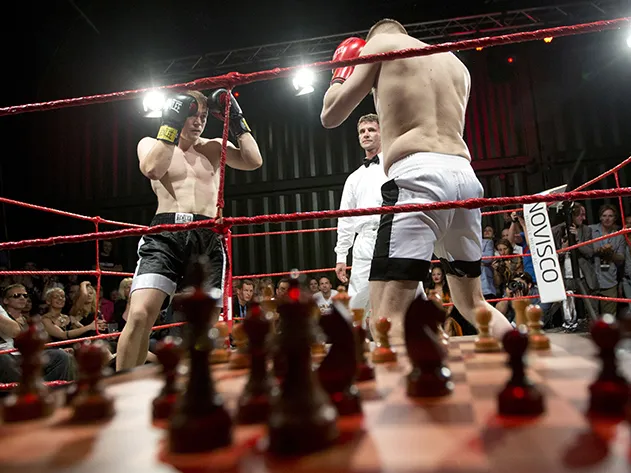
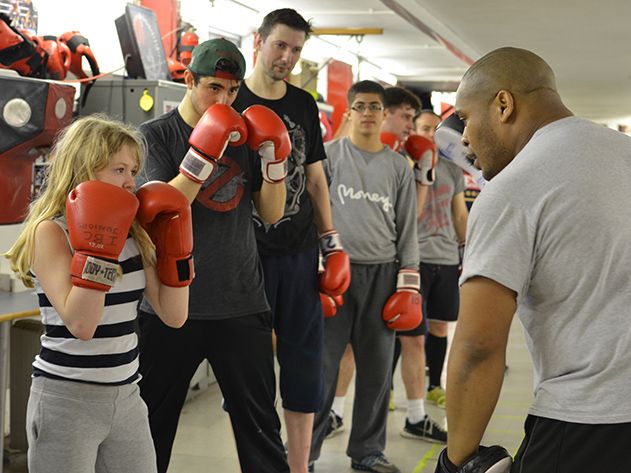
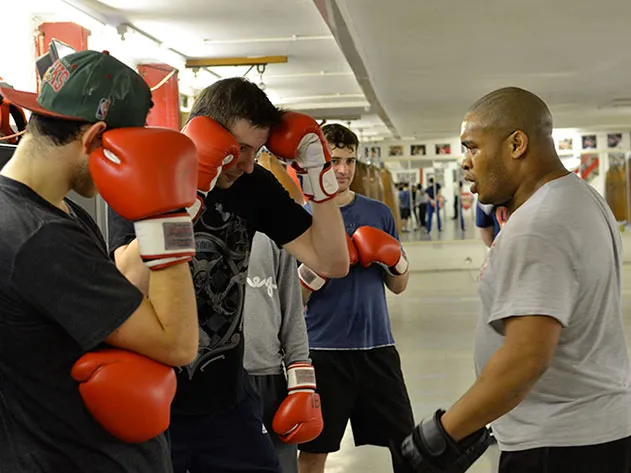
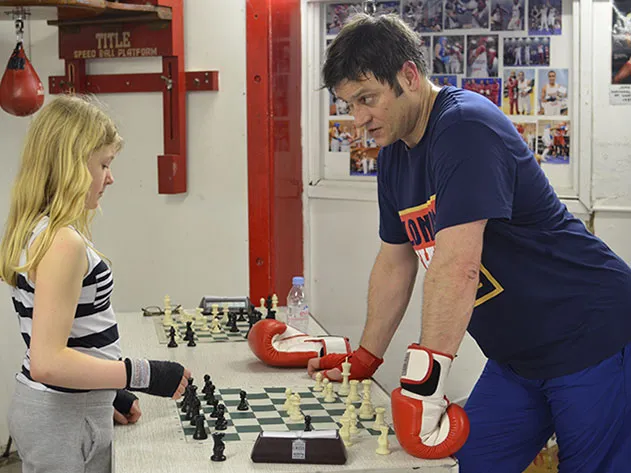
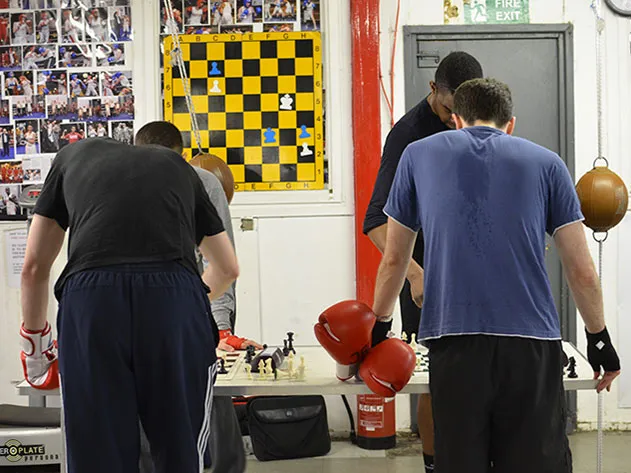
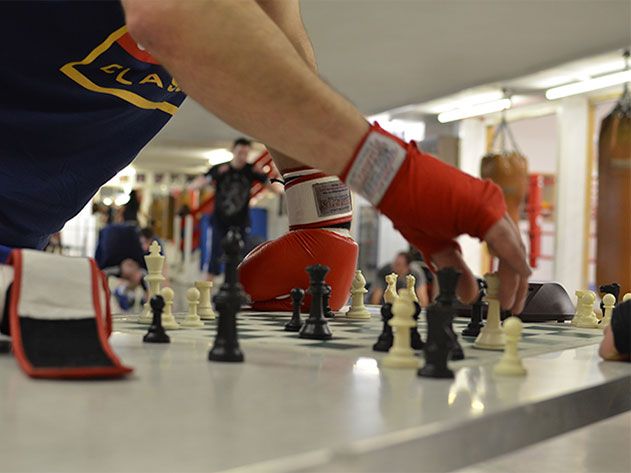
/https://tf-cmsv2-smithsonianmag-media.s3.amazonaws.com/accounts/headshot/LindaRodriguezMcRobbieLandscape.jpg.jpeg)